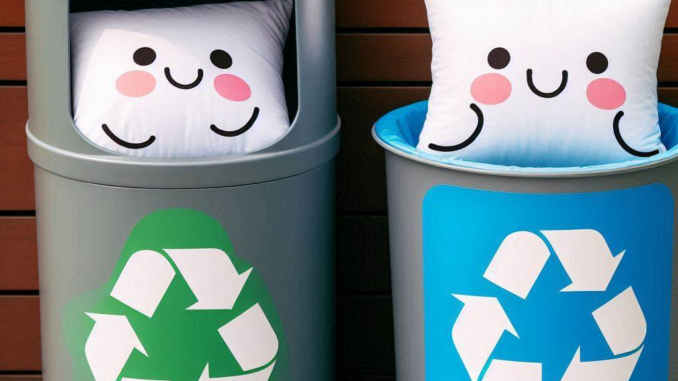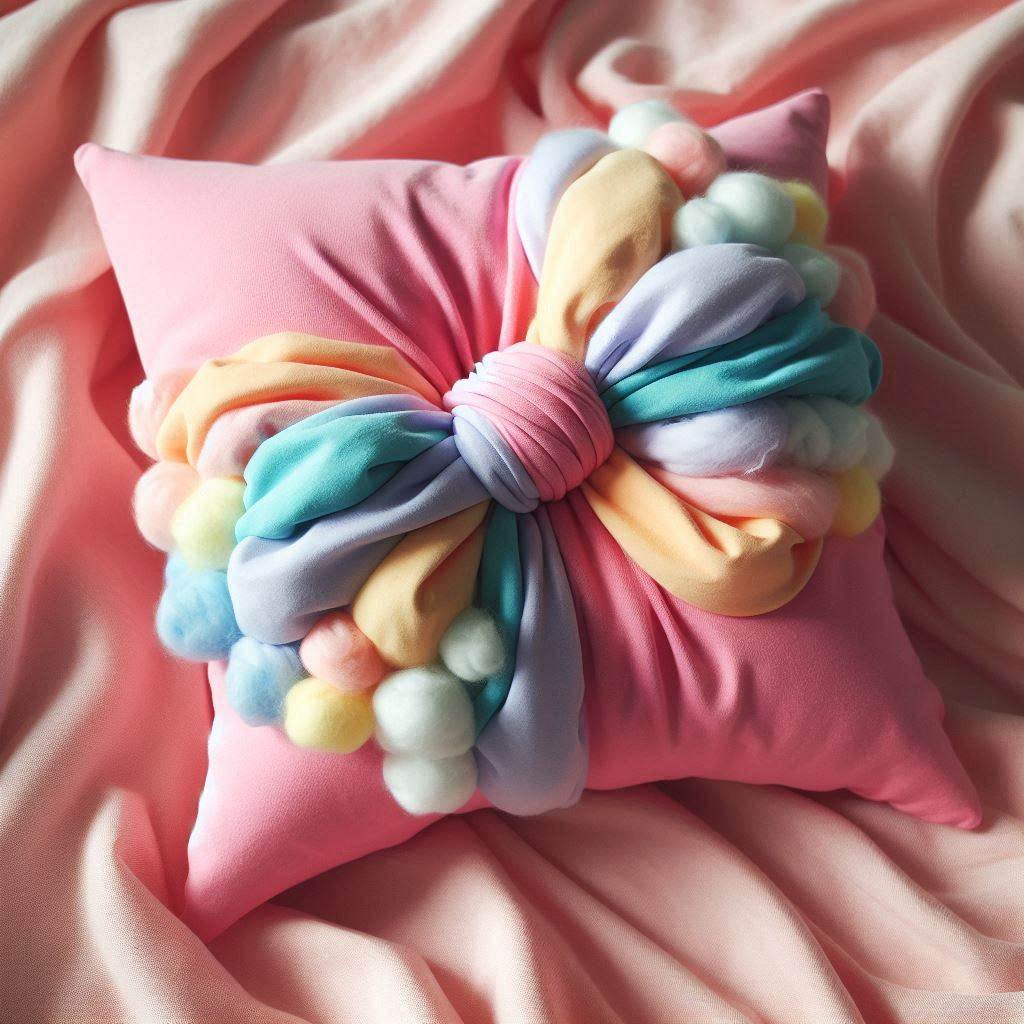
Where to Recycle Pillows?
Ever wondered what to do with those old, lumpy pillows taking up space in your closet? You’re not alone! Many of us struggle with this common household dilemma. But don’t worry, I’ve got you covered with this ultimate guide on where to recycle pillows.
Quick Answer: You can recycle pillows through local textile recycling programs, retailer take-back initiatives, mail-in recycling services, or by repurposing them for DIY projects. Animal shelters and some charities also accept pillow donations for bedding.
Why Recycling Pillows Matters
Before we dive into the how-to, let’s talk about why recycling pillows is a big deal. Think about it – we all use pillows, and they don’t last forever. When we toss them in the trash, they end up in landfills, taking up space and potentially releasing harmful chemicals as they break down.
By recycling our pillows, we’re not just freeing up closet space – we’re doing our part to help the planet. It’s a small step that can make a real difference when we all pitch in.
My Pillow Recycling Wake-Up Call
I’ll never forget the day I realized how important pillow recycling is. It was during my big spring cleaning last year. As I was sorting through my linen closet, I found a mountain of old pillows – flat, lumpy, and definitely past their prime.
My first instinct was to toss them in the garbage. But then I thought about all the pillows I’ve thrown away over the years, and it hit me – that’s a lot of waste! I decided right then and there to find a better way. And let me tell you, the journey opened my eyes to so many cool recycling options I never knew existed!
Step-by-Step Guide to Recycling Pillows

1. Check the Condition
First things first – take a good look at your pillows. Are they just a little flat, or are they beyond hope? This will help you decide whether to recycle or repurpose them.
- Still comfy? Consider donating to a local shelter or animal rescue.
- Seen better days? Time to explore recycling options.
2. Look for Local Recycling Programs
Many cities and towns have textile recycling programs that accept pillows. Here’s how to find them:
- Check your local government website for recycling info.
- Call your waste management department and ask about pillow recycling.
- Use online tools like Earth911 to find recycling centers near you.
Pro tip: Some recycling centers might list pillows under “textiles” or “household fabrics,” so keep an eye out for those terms!
3. Explore Retailer Take-Back Programs
Believe it or not, some stores will take your old pillows off your hands. It’s worth checking with big retailers, especially if you’re buying new pillows. Here’s what to do:
- Ask at the customer service desk of stores like IKEA, Bed Bath & Beyond, or your local department store.
- Look for info on their websites – many stores have sustainability pages that list their recycling programs.
Remember: Policies can vary by location, so it’s always best to double-check before you lug your pillows to the store!
4. Try Mail-In Recycling Services
If local options are a no-go, don’t give up! There are companies that specialize in recycling hard-to-recycle items, including pillows. One popular option is TerraCycle. Here’s how it usually works:
- Sign up for a recycling program on their website.
- Collect your pillows (and often other textiles).
- Ship them to the recycling facility using a prepaid label.
Heads up: These programs often have a fee, but it’s a small price to pay for keeping pillows out of landfills!
5. Get Creative with DIY Repurposing
If you’re feeling crafty, why not give your old pillows new life? There are tons of cool ways to repurpose pillow materials:
- Use the stuffing to make pet beds or cat scratching posts.
- Create cozy floor cushions for reading nooks or kids’ play areas.
- Make draft stoppers for doors and windows to save on energy bills.
Here’s a simple draft stopper idea to get you started:
Materials: - Old pillow - Fabric scraps - Scissors - Sewing machine (or needle and thread) Steps: 1. Cut open the old pillow and remove the stuffing. 2. Measure the width of your door. 3. Cut a long strip of fabric about 4 inches wider than your door and 8 inches tall. 4. Fold the fabric in half lengthwise and sew the long side and one short end. 5. Turn the fabric tube right side out. 6. Stuff with the pillow filling until firm. 7. Sew the open end closed. Voila! You've got a custom draft stopper and one less pillow in the landfill.
The Impact of Pillow Recycling
You might be thinking, “It’s just a pillow – how much difference can recycling it really make?” Well, let me tell you, it adds up! Check out these eye-opening stats:
- The average person uses 1-2 pillows at a time and replaces them every 1-2 years.
- With over 330 million people in the US alone, that’s potentially hundreds of millions of pillows being thrown away each year!
- Most pillows are made from synthetic materials that can take hundreds of years to decompose in landfills.
By recycling your pillows, you’re not just saving landfill space. You’re also:
- Reducing the demand for new raw materials
- Saving energy that would be used to produce new pillows
- Preventing potentially harmful chemicals from leaching into the soil and groundwater
Pillow Recycling Around the World
It’s not just us Americans who are getting savvy about pillow recycling. Check out these cool initiatives from around the globe:
In Japan, a company called Nishikawa Sangyo has developed a “pillow-to-pillow” recycling system. They collect old pillows, break them down, and use the materials to create new pillows. Talk about full circle!
Over in the UK, the John Lewis department store chain runs a takeback scheme for pillows and duvets. They partner with a recycling company to turn old bedding into things like insulation and stuffing for pet beds.
These examples show that with a little creativity and commitment, we can find awesome ways to keep pillows out of landfills.
Frequently Asked Questions
Can I recycle pillows in my regular recycling bin?
Nope, afraid not. Most curbside recycling programs don’t accept pillows because they’re made of mixed materials that are hard to separate. That’s why we need to look for special recycling options.
What happens to pillows when they’re recycled?
It depends on the recycling method, but generally, the different materials in pillows are separated. Fabrics might be turned into cleaning rags or insulation, while fillings could become stuffing for new products.
Are there any pillows that are easier to recycle?
Yes! Some companies are now making pillows with recycling in mind. Look for pillows made from a single material (like 100% polyester) or those with removable covers that can be recycled separately.
Wrapping It Up: Your Pillow Recycling Action Plan
Alright, let’s recap what we’ve learned about recycling pillows:
- Check if your pillows can be donated or repurposed first.
- Look for local textile recycling programs or special collection events.
- Ask retailers about take-back programs when buying new pillows.
- Consider mail-in recycling services for hard-to-recycle items.
- Get creative with DIY projects to give your old pillows new life.
Remember, every pillow we keep out of the landfill is a win for the planet. So next time you’re faced with an old, worn-out pillow, don’t just toss it in the trash. Take a moment to consider its recycling potential. Your future self (and Mother Earth) will thank you!
Ready to take action? Start by gathering up those old pillows and checking out the recycling options in your area. And hey, why not spread the word to your friends and family? The more people who know about pillow recycling, the bigger impact we can make together.
Sweet dreams and happy recycling!


Leave a Reply